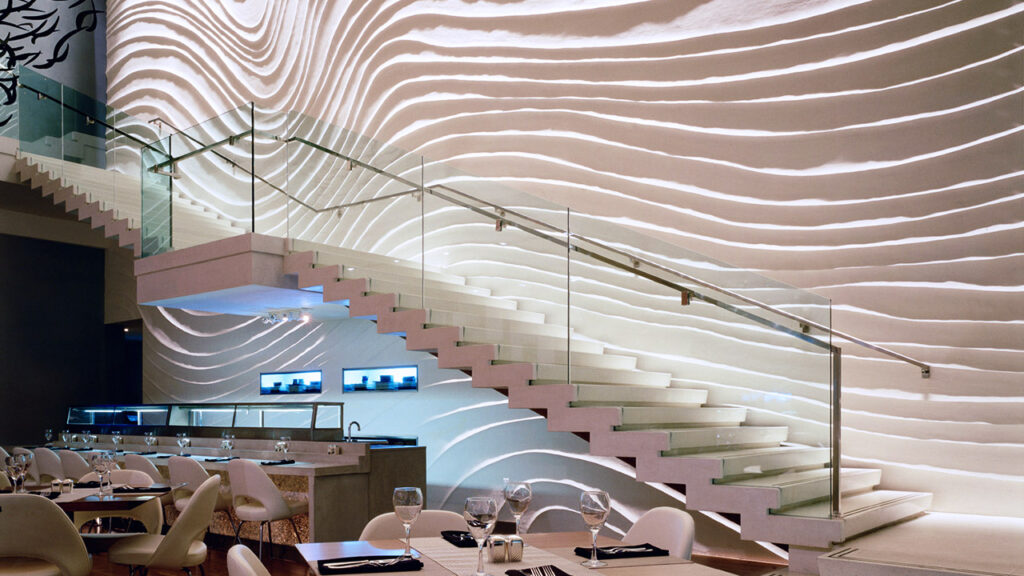Causes, Effects and Solutions for Light Pollution
Light pollution is a side effect of the industrial civilisation and the result of ineffective lighting. Luminaires that project light upwards or to the sides cause the night sky to constantly illuminate. A poor lighting design causes following components of light pollution; glare, sky glow, light trespass and clutter.

Nowadays, artificial night lighting is everywhere, darkness no longer exists and especially in cities and urbanized areas light is a real nuisance.
Whether useful or useless, artificial night light sources are multiplied at an alarming rate for several years; lighting of cities and villages, urban towers and monuments, illuminated signs, lighting of parks, streets, roads and commercial or industrial zones, bridges, viaducts, roundabouts, airports, illumination of facades and gardens of individuals… Not only the heart of cities but also peri-urban and rural areas are effected.
Light pollution is a side effect of the industrial civilisation and the result of ineffective lighting. Luminaires that project light upwards or to the sides cause the night sky to constantly illuminate.
A poor lighting design causes following components of light pollution; glare, sky glow, light trespass and clutter.
- Glare, excessive brightness that causes visual discomfort
- Skyglow, brightening of the night sky over inhabited areas
- Light trespass, light falling where it is not intended or needed
- Clutter, bright, confusing and excessive groupings of light sources
The effects of light pollution are listed and explained below.
Energy consumption increasing
Using luminaires that emits too much light or using where it’s not needed is wasteful.And wasting energy has several economical and environmental results.
Disrupting the ecosystem and wildlife
Light pollution can significantly disrupt the lives of nocturnal animals. Migratory birds during their long journey, and insects die massively.
For many animal species, darkness is a vital element. During evolution, they have adapted to day-night change. There are thus diurnal and nocturnal animals, which have therefore adapted their behavior to variations in the lighting in their environment.Any change in the conditions of natural light by artificial lighting can have ecological consequences, and in certain circumstances reduce biodiversity.
Harming human health
Scientists point out that humans today receive too much light at night and too little during the day. Result: the rhythm of the sleeping and waking phases is disturbed. Because many workspaces are too dark while the night is too bright, the internal clock tends to postpone rest periods and therefore sleep. The effects are the same as those of a jetlag.Humans have a circadian rhythm, biological clock, artificial light at night can disrupt that cycle.
Human body produces the hormone melatonin in response to circadian rhythm which helps keep us healthy. Melatonin has antioxidant properties, induces sleep, boosts the immune system, lowers cholesterol, and helps the functioning of the thyroid, pancreas, ovaries, testes and adrenal glands. Nighttime exposure to artificial light suppresses melatonin production.
Effecting crime and safety
There is no clear scientific evidence that increased outdoor lighting deters crimes. It may make us feel safer, but has not been shown to make us safer.
Impacts on astronomy
Artificial lights from cities create a permanent skyglow at night and obscuring our view of the stars.
Ways to reduce light pollution,
- First of all being aware that light pollution is an universal problem, setting rules and laws against light pollution, and using IDA (International Dark Sky Association) regulations,
- Using light when and where it’s needed, controlling light with lighting automation systems or just with motion detectors or timers,
- Installing efficient and full cutoff lighting fixtures, and orienting them correctly. Uplights, skybeamers and uncontrolled wall lamps should not be used,
- Selecting warm white light color with low emission of blue light.
Unfortunately, it is clear that urban agglomerations become more and more artificial and sterile environments, even stars are difficult to perceive because of too many light sources, sometimes useless and often poorly designed…
Sources:
https://www.everythingconnects.org
https://cleantechnica.com
https://cleantechnica.com
https://www.notre-planete.info
https://www.globe-swiss.ch





